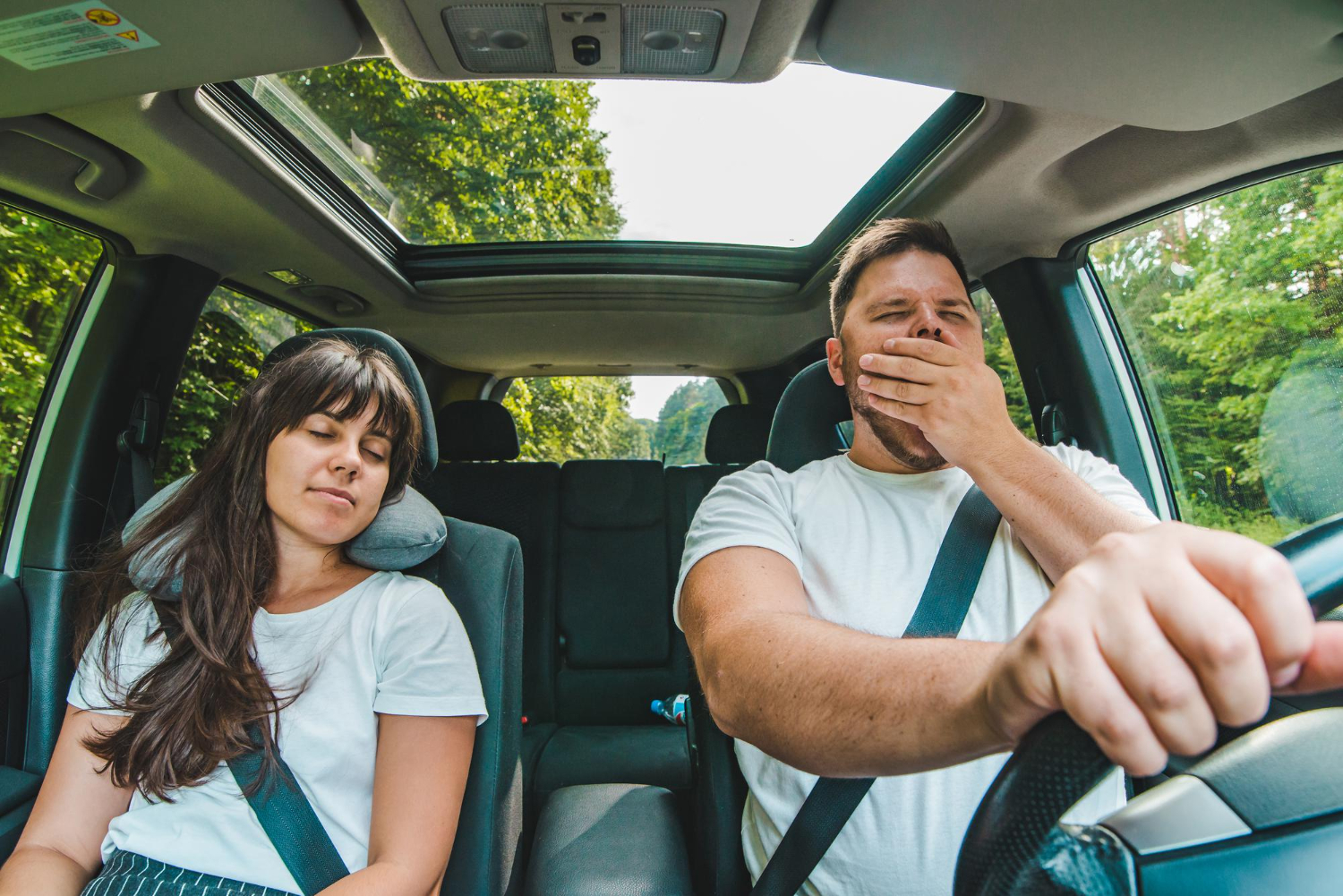The MSN recently compiled a list of 2022 statistics from the NSC, CDC, AAA, and NHTSA that illuminate the true danger of drowsy driving, and unfortunate frequency among drivers.
- The National Safety Council (NSC) found that 71,000 injuries, 100,000 collisions, and 1,550 fatalities are caused by drowsy driving every year.
- According to the AAA, 27% of drivers have admitted to driving while so exhausted that they had trouble keeping their eyes open.
- An estimate of 1 in every 25 drivers has actually fallen asleep behind the wheel according to the CDC.
- NHTSA found that 47% of the drivers who have passed out behind the while did so during a trip that was only an hour long or less.
The Danger is Real
Why is driving while tired so dangerous?
Because of the level of impairment caused by sleep deprivation, drowsy driving is similar to drunk driving. In fact, according to the CDC, going 24 hours without adequate sleep impairs a driver to the point of equivalence with a .10% blood alcohol content, which is above the legal limit to operate a vehicle in Missouri.
In addition, drowsy driving critically increases the risk of falling asleep and causing a car accident.
Drowsy Driving Myths
Why is sleep deprived driving so common? These myths are the culprit.
- Trusting caffeine while sleep deprived can cause “microsleeps.” Microsleeps are short periods of unconsciousness that last a few seconds. A few seconds may sound like no big deal, but traveling for only four seconds at 55 mph covers the distance of 100 yards – while you weren’t even conscious. Do not depend on caffeine or energy drinks to keep you alert.
- Playing loud music and/or keeping your windows open doesn’t actually do anything to guarantee you won’t fall asleep behind the wheel. If anything, this adds more sensory baggage to an already exhausted mind.
- If you think you drive well on little sleep, you’re wrong – even if you’re “used to it.”. According to 2022 statistics from the National Sleep Foundation, adults aged 18-64 need a minimum of 7 hours of sleep in order to function at full capacity.
Know the Signs
It’s important to be aware of the signs that you are too tired to drive safely in order to prevent unintentional drowsy driving.
- Frequent yawning, eye rubbing, and blinking.
- Zoning out or trouble remembering the last few miles driven.
- Drifting into rumble strips.
- Daydreaming.
- Missing exits or stop signs.
- Trouble staying in your lane.
- Headaches.
Prevention
Preventing sleep deprived driving is more than doable if you follow these safety tips from the NHTSA.
- Get at least 8 hours of sleep before driving, especially before long trips.
- Don’t consume alcohol before driving – no, not even one drink. Just because you haven’t had enough to become inebriated, doesn’t mean it’s safe. Alcohol is a depressant, which causes drowsiness.
- Do not take prescribed medications with side effects that include drowsiness before operating a vehicle to prevent a car crash.
- If possible, avoid driving between midnight and 6:00am, which is known as the peak drowsiness period.
- If you get tired while on the road, pull over somewhere safe to take a nap before continuing. It’s a good idea to keep a pillow and blanket in your trunk for these scenarios.
Tips for Better Sleep
Getting a good night’s sleep is easier said than done sometimes, especially if you suffer from sleep disorders such as insomnia. The CDC recommends making a habit of practicing these forms of “sleep hygiene”, or good sleeping habits.
- Set a sleep schedule for yourself and stick to it. That means going to bed and waking up at the same time every day, even on your days off.
- Do not consume big meals, alcohol, or anything with caffeine in it before going to sleep.
- Get more exercise. Being active and productive makes falling asleep easier at night.
- Avoid electronics like TV, cell phones, video games, and tablets close to your bedtime. The blue light from the screens makes winding down difficult.
- Environment is key. Make your bedroom optimum for sleep by keeping it at a comfortable temperature, dark, and relaxing.
How To Prove Drowsy Driving
It can be tough to prove that the driver at fault for an accident was sleep deprived – unless you have the right lawyer of course. An expert personal injury attorney knows various ways to prove your case, including those below.
- The other driver’s work schedule and time cards can prove if the driver was not getting enough sleep the week of the
- Gathering contact information from eyewitnesses provides an unbiased account of the car accident.
- Police reports and traffic camera footage are great ways to support your claim.
- Expert opinions from forensic professionals, doctors, mechanics, or others can help provide useful information that proves the probability of drowsy driving.
If you’ve been in an accident caused by a drowsy or distracted driver, give us a call to schedule your consultation. You will receive free legal advice from a St. Louis lawyer near you with the experience needed to obtain the full value of your personal injury.

